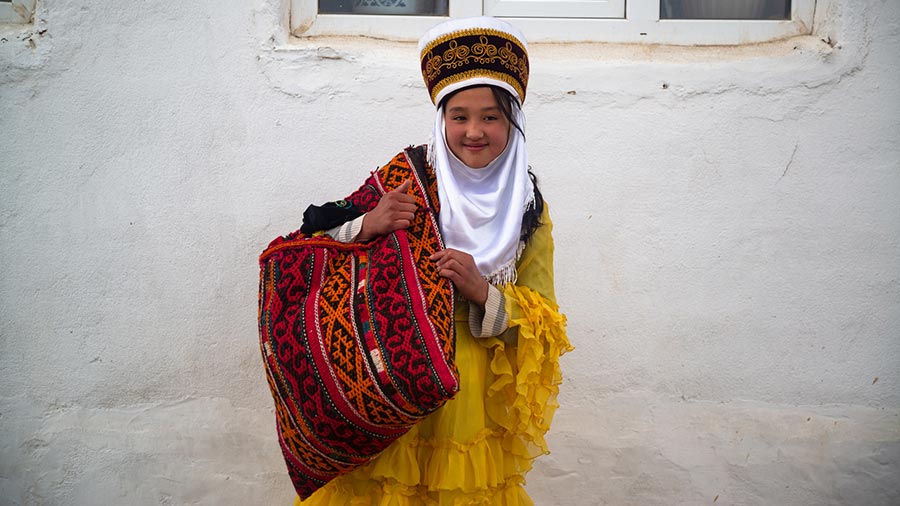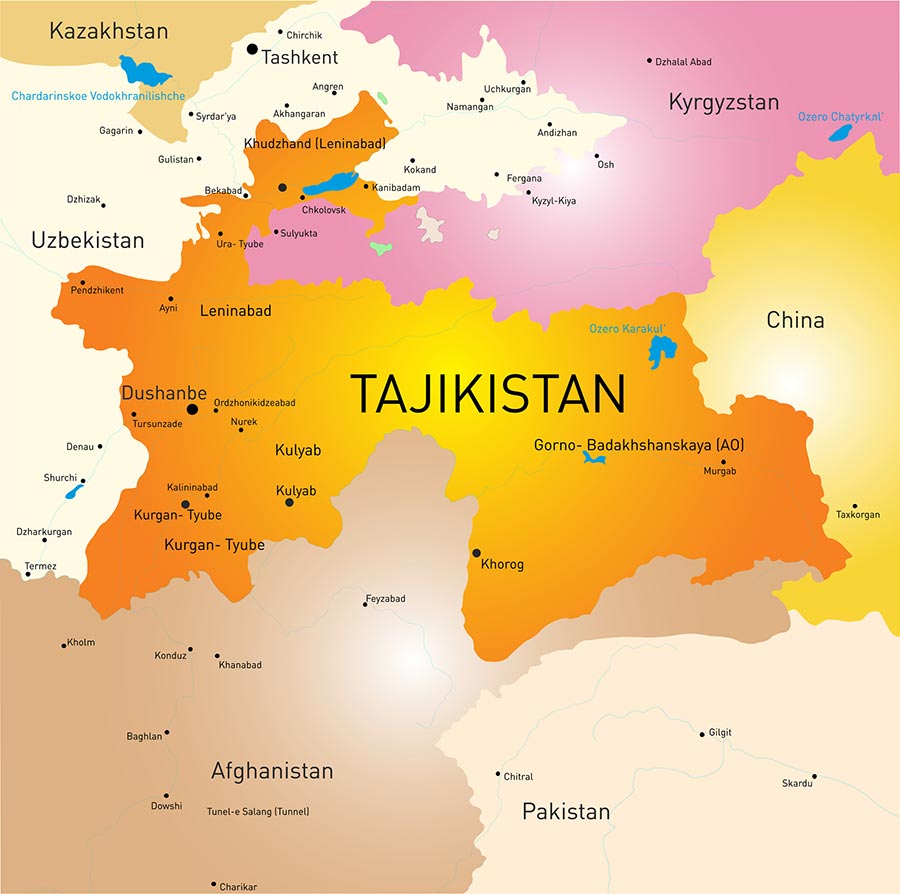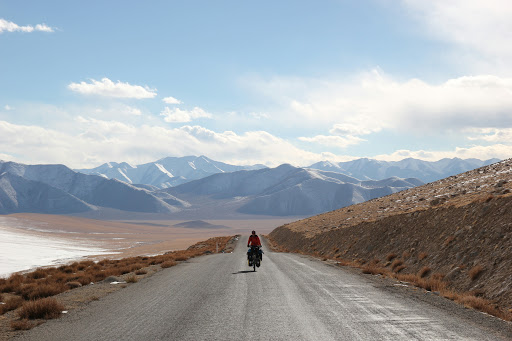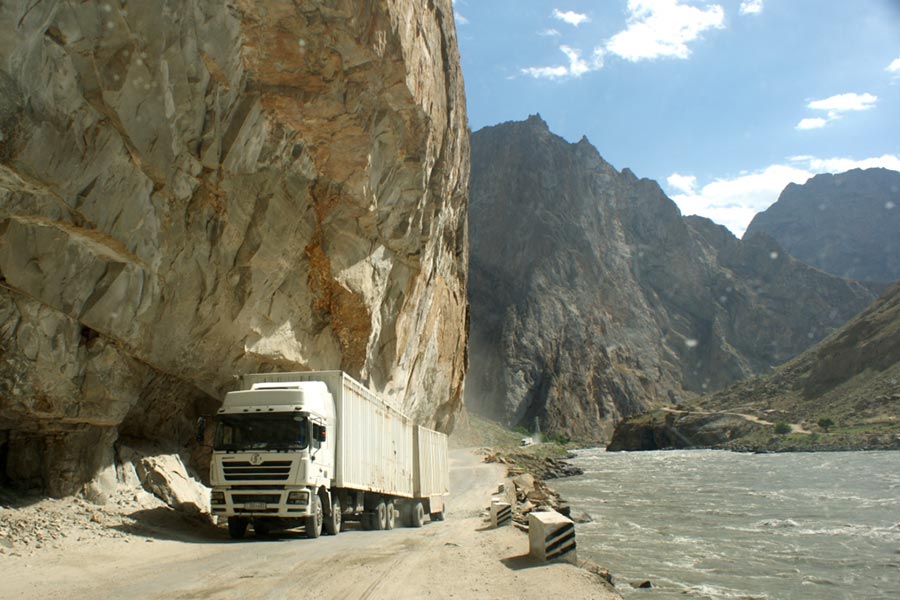Conquering The Mountains: Tajikistan And The Belt And Road Initiative

Op/Ed by Chris Devonshire-Ellis
Tajik connectivity roads, rail, tunnels, energy and IT infrastructure developments are all being put in place to trade-liberate this landlocked mountain nation
Tajikistan is the poorest country and smallest country in the Central Asian region, landlocked, with mountainous terrain maintaining a highly conservative, somewhat isolated Muslim population. The country shares a 1,345km border with war torn Afghanistan to its south, where the situation is tense with Taliban fighting close to Tajik territory. The country is 98% Muslim, with the majority of these being Sunni (the same sect as China’s Uyghurs) although the country regards itself as secular. Relationships between religious groups are generally amicable, although there is some concern among mainstream Muslim leaders that minority religious groups could undermine national unity. For this reason, the Government takes a fairly hard line with local Muslim behavioral standards and insists for example that citizens and male visitors must shave beards. Singapore has previously adopted a similar position. The United States, France, Russia, and India have all maintained military bases on the Tajik-Afghan border in the past, however with the United States and NATO departing Afghanistan in mid-September, the onus on military security will fall largely upon on Russia.

Tajikistan’s border with China is 477km long, bordering Xinjiang Province. This is highly difficult mountainous terrain, often unstable, at high altitude, prone to landslides and difficult to police. There is one border crossing at Karasu Port of Entry over the Kulma Pass, at an elevation of 4.36km above sea level. From here, the rugged AH66 route leads from connections from China’s Karakoram Highway and onto Kashgar and Urumqi, and over the Pamir mountains eventually to the Tajik capital, Dushanbe. It is only open for two weeks each month (16th to the 30th) from May to November as constant landslides require continual maintenance and the route requires constant repair and clearance.
I have been here, to this glorious part of the world, where Marco Polo camped in the local Fort, no doubt in a fine room and attended too in every way imaginable – he was a veteran of the Pleasure Dome. I had more modest yet warm and wholesome lodgings – with a local Yurt and family, To modern shame, though, and some merriment, my Toyota Landcruiser, that unsurpassed powerful machine of steppe got bogged down nearby. It was fitting camels pulled it out at Taxkorgan, where Black Winged Stilts dance, Pakistan’s Gilgit is just 120km down the road, and Marco Polo’s ghost sighed at my 4WD arrogance.
The local Chinese Tajik women paint their eyebrows together, make yak butter tea and rock their tightly swaddled infants in hammocks while the men drink light beer, smoking Turkish cigarettes and a whiff of Afghani poppy. At this evening altitude, the flies are not so bothersome; the fat tailed sheep are tasty, while those that survive the pot will need to pass months grubbing about in snow. Hoopoes fly and so does the spirit. This is a remote place, and it feels so. There is only one way in and one way out and if I stay too long, I will winter here, which might result in some interesting conversations and potentially fatal local love stories. But I dare not, tempted as I am by the beauty.
There are other mountain passes but these can only be used by pack animals.

There have been discussions about connecting Tajikistan with China via rail, although a direct route over the Pamir is almost impossible to build. Instead, a route into Tajikistan via the countries northern border with Kyrgyzstan is being considered. China’s national railway network extends as far as Kashgar (with additional talk of extending that south to Gilgit in Pakistan) with plans to link that line through to Kyrgyzstan, A 2012 plan was devised to build almost 50 tunnels and close to 100 bridges, with a total length of 500 km. The line would traverse mountainous terrain, some sections over 3,000 meters above sea-level, with new construction of approximately 280km of track in Kyrgyzstan and about 180 km in China. The proposed line would run to Osh, a major trading city in Kyrgyzstan, and west into Uzbekistan. From Osh a spur would head south across the Kyrgyz-Tajik border to Dushanbe. Tajikistan does have a small rail network, terminating in Dushanbe, with links to Uzbekistan and ultimately to Moscow. There has also been talk of a Turkmenistan-Afghanistan-Tajikistan (TAT) railway that would link through west to Iran and the International North South Transportation Corridor. These plans may one day come to fruition, if not for the huge expense, but in following both China and Russia’s desire to bring regional peace to this entire region through the promotion of trade.
Tajikistan, with its population of some 9.5 million, has however been enjoying strong economic growth for nearly 20 years, mainly based on the export of mineral deposits and a significant cotton industry. But sustaining growth in future will need substantially higher growth in private investment and exports. The national per capita income (GNI) is close to US$1,000 but this is concentrated in the capital Dushanbe, nearly a third of its population, or about 6 million, live in relative poverty.
Tajikistan’s growth of 6-7 percent per year since 2000 was fueled by growth in consumption and public investment, the latter driven mainly by rising remittances and export receipts from aluminum and cotton. Private investment and growth of other exports remains weak. Accordingly, the Tajikistan National Development Strategy 2030 (NDS) seeks to address this, and is tied to China’s Belt & Road Initiative, which in Tajikistan is expected to achieve better transport connections and greater economic integration of participating countries, and especially in Central Asia.
The country needs it – in 2019, nearly 29% of Tajikistan’s GDP came from immigrant remittances, mostly from Tajiks working in Russia. The lack of migration due to Covid the past two years has hit Tajikistan’s economy hard, and it needs to diversify. That means getting other infrastructure into place, such as improvements in Tajikistan’s cross-border transport, electricity supply and ICT infrastructure up to date, while improving Tajik shipment time.
Belt and Road projects in Tajikistan therefore have been concentrating on this, ranging from roads and railways to pipelines and power plants, even traffic cameras. There has been some cost to Tajikistan, and some realignment of national assets on a barter basis, in 2018 the Tajik Government swapped a Gold Mine operation for a Chinese-built power plant, while a few years earlier it settled a long-standing border dispute with China by agreeing to sell 1,322 km2 of land in the Pamir Mountains to Beijing.
There are some bright spots, Tajikistan has plenty of sunshine and is an exporter of electricity. There is – depending on whether much needed road and rail connections can be built – also room to develop regional trade. Tajikistan exports more to Turkey and Switzerland than it does to neighboring Uzbekistan and China. That this position has occurred is a throwback to the regional disputes and fighting that happened in 1992 following the breakup of the Soviet Union, today a more trustworthy diplomatic engagement is in place, assisted by Tajikistan’s membership of the Shanghai Cooperation Organization, which it joined in 2001.
Many other highway and tunnel construction projects are underway, r have been completed, including rehabilitation of the Dushanbe–Chanak Highway between Tajikistan and Uzbekistan, financed and constructed by the China Road and Bridge Corporation (CRBC).

The Dushanbe–Chanak Highway
The Kurgan-Tube–Nizhny Pyanj highway runs through to Afghanistan with the route also planned to be part of the TAT rail network. The construction of tunnels under the Anzob, Shakhristan, Shar-Shar and Chormazak mountain passes to Uzbekistan are also under construction – the Anzob Pass north of Dushanbe at roughly 3.4 km above sea level is one of the most treacherous mountain passes of Central Asia yet when completed will add in another route for Tajik regional trade.
Bringing Tajikistan into the Central Asia and subsequent Asian and global markets will be an enormous feat of Belt and Road planning and engineering capabilities. Although the ill-planned withdrawal of US and NATO troops has bought an unwelcome slice of insecurity to the country, Russian and Chinese efforts to promote peace through trade, if successful, will see Tajikistan settle and take a place within the Central Asian family it has not enjoyed since Soviet times 30 years ago. With the country heavily dependent on white goods and electrical imports, there will be opportunities to invest and develop regional brands from combining less highly taxed imported components and mixing those with domestic products. It is also a member of the Commonwealth of Independent States (CIS) and shares free trade benefits with Armenia, Azerbaijan, Belarus, Kazakhstan, Kyrgyzstan, Moldova, Russia, and Uzbekistan, and signed off improved bilateral trade agreements with China last year. Although Tajikistan may still be a work in progress, when infrastructure, road, rail, energy, and IT connectivity improvements are completed, by 2025 the Tajik economy and trade should start to boom.
Related Reading
- India Gets In On Belt & Road Infrastructure By Building Highway In Tajikistan
- China Invests In Tajikistan Silver Deposits, Roads, And Aluminum
- Uzbekistan, Tajikistan Set to Restore Normal Relations, Offering China Easier Access to Central Asia via Xinjiang
About Us
Silk Road Briefing is written by Dezan Shira & Associates. The firm has 28 offices throughout Asia, and assists foreign investors into the region. For strategic advisory and business intelligence issues please contact the firm at silkroad@dezshira.com or visit www.dezshira.com





